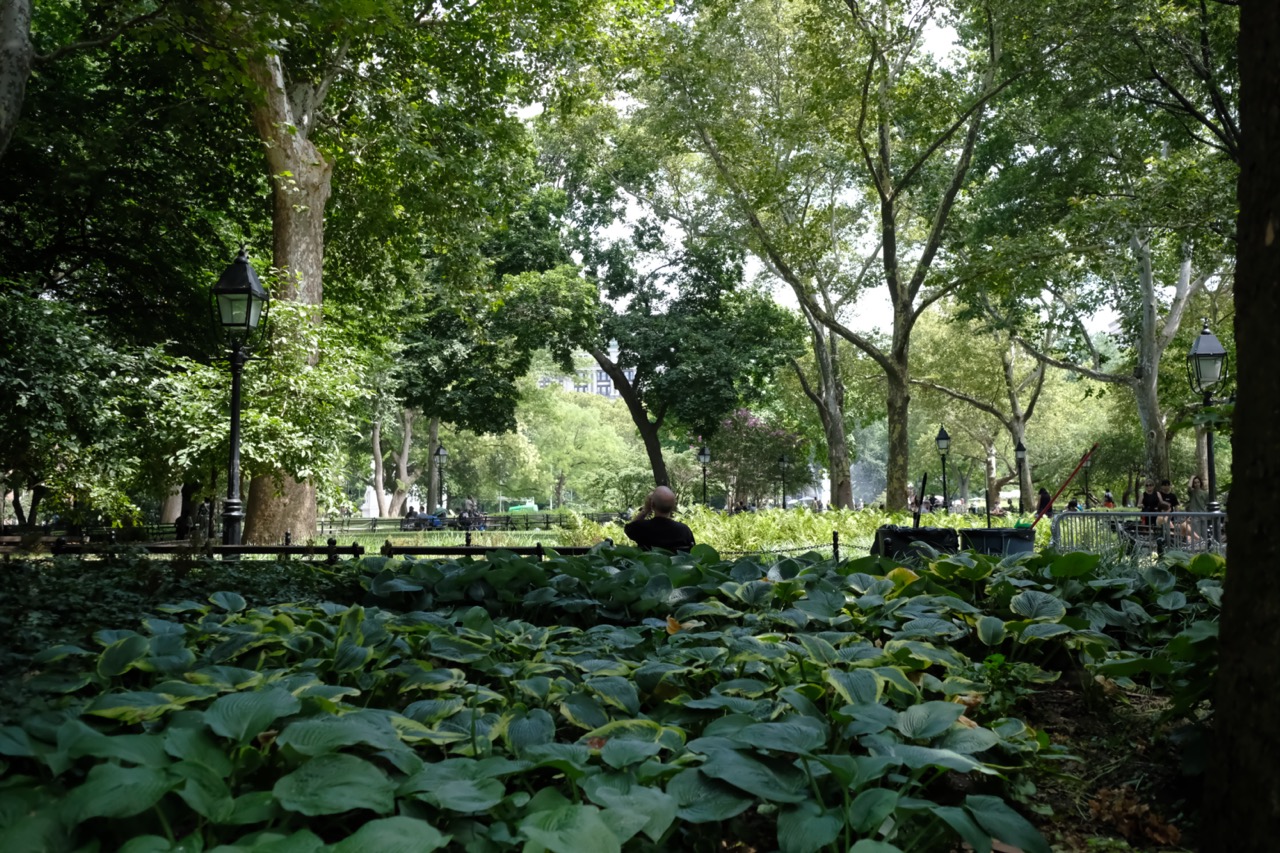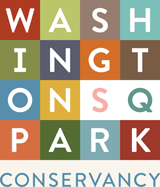A Helping Hand

Washington Square Park is a vibrant, unique, beautiful space that holds a special place in the hearts of many. It’s easy to focus on the good and beautiful; to gush over the monuments, swoon over the plantings, and bask in the culture surrounding you. But doing so ignores the reality that the Park is home to an ever-increasing population of at-risk New Yorkers. The challenges they face range from homelessness to addiction and everything in between, and they often engage in illicit and illegal activity that impacts other Park-goers’ ability to enjoy the space. Leaving fellow citizens in need of help to fend for themselves isn’t a good option, and that’s where the city human services nonprofits come in.
These are our unsung, often unnoticed heroes: street outreach workers. They’re on the ground in the Park, trying to build relationships and connect people with resources. “There’s no ‘normal’ day on outreach,” explains Alyssa, Program Director at Manhattan Outreach Consortium – Downtown Goddard, one of the numerous organizations on the ground in Washington Square and the broader neighborhood. “Since our population is, by definition, at an unstable point in their lives, we have to be very adaptable and flexible. But an average day consists of canvassing and engaging new clients, transporting clients to both transitional and permanent housing placements, completing case management tasks such as assisting with benefits, care coordination for medical and psychiatric needs, harm-reduction counseling, crisis intervention…it really runs the gamut.”
Their work isn’t flashy so you may not have noticed them at it, but there are teams on the ground 24/7. The services provided in the Park itself are limited—mostly harm reduction and hygiene supplies. “Our real job is engagement, building rapport,” says Alyssa. “Most of the services we can connect people to are naturally outside of the Park. We provide transitional and eventually permanent housing, and can connect folks to legal resources, job resources, entitlements, harm-reduction and mental health services. Each individual’s situation is different, so what they need is different.”
It might sound simple, but walking up to people and trying to strike up a conversation isn’t exactly easy. “We interact with all types of people,” says Alyssa. “Plenty of our clients are wary of speaking to us, at least at first. That’s why we have to put in so much work to build that relationship.” When teams are canvassing for new clients, they approach individuals who appear to be homeless and ask if they’re interested in housing services. Once a relationship is established and they’ve begun connecting an individual to resources, sometimes they’ll be on the lookout for a specific person, for example when a bed opens up in a transitional housing facility. “Our clients face many challenges. Many of them are interested in coming indoors, but (understandably) do not want to sleep in a room with strangers due to safety concerns. A lot of them have been victims of violence, theft or other crimes in the past, which makes them wary. Some people are really excited, others are skeptical, frustrated or even angry. Many of our clients are slow to trust so we often have to build a relationship over time and with smaller building blocks before they are willing to consider working with us on housing or addiction services. And even then, getting housing is a long and difficult process that can often feel dehumanizing.”
And that’s at the heart of why ”solving” this complex issue is so difficult; none of the interventions that can make lasting change happen quickly. It can often take numerous interactions, sometimes even years of working with a person before they’re willing to accept help. Holley recalls one client who refused services for years until she was able to get a single bed out of concern for her safety. While she’s now making tremendous strides and has connected with psychiatric and medical providers to keep the momentum going, it was a long road, and that holds true for many of the people in WSP.
“I wish people understood how difficult our clients’ lives are,” says Alyssa. “They struggle to keep their benefits active, to attend to their mental and physical health, to get a cellphone, even to find adequate food and clothing. The instability of being on the street can be crushing, but getting help can be scary too. People need to remember that our services are voluntary, and it isn’t illegal to be homeless in our city.”
Alyssa, and the other human service workers like her, aren’t out in the Park for Instagram likes or to film a “community service” TikTok. They’re out there to make a concrete impact, and to provide non-judgemental, consistent, positive regard for a population that is often ignored at best and scorned at worst. Outreach workers aren’t super visible to the casual observer, but that doesn’t mean you can’t thank them. You can show these heroes how much you appreciate their efforts by taking your own action. “If you see someone who could benefit from Outreach services, you can call 311 and report a “homeless person in need of assistance.” A team will come to engage them. On a broader scale, you can advocate to law and policy makers that these individuals need increased access to housing with dignity: more access to single rooms and more permanent housing.
